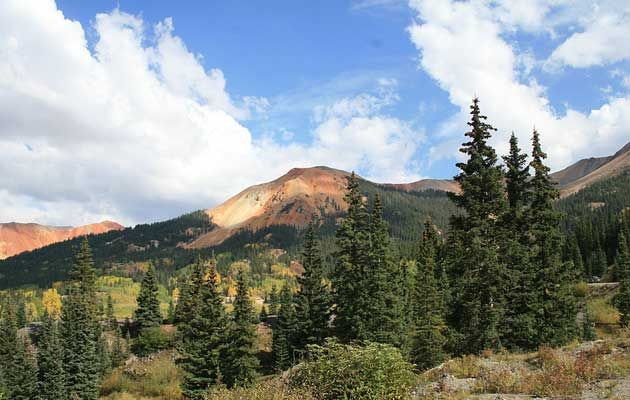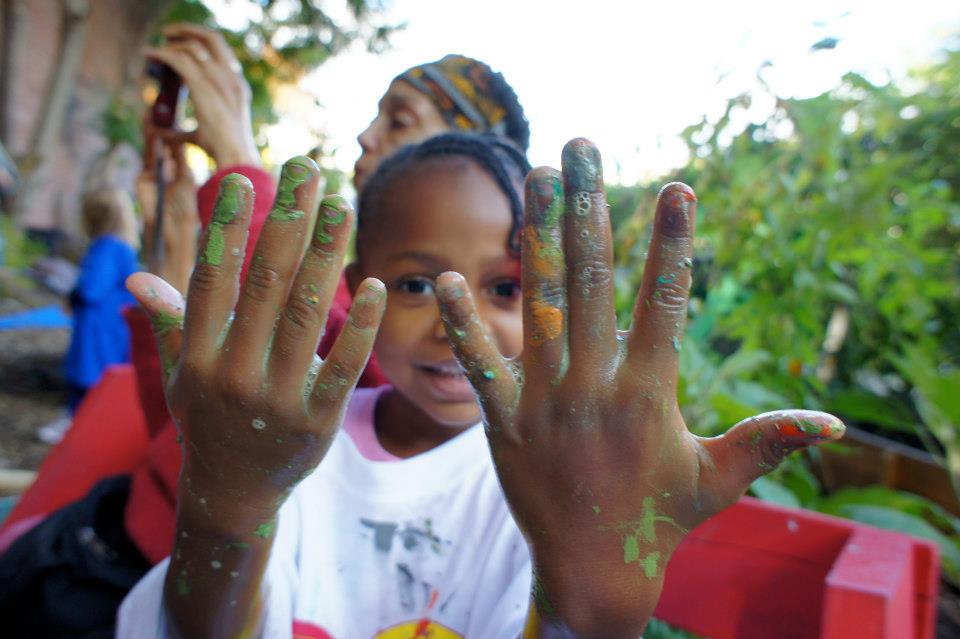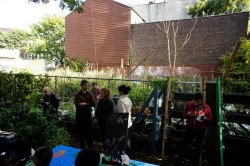
A Small Green PatchIt’s harvest party time at A Small Green Patch in Brooklyn.
In 2011, videogame developer Tami Johnson, then 29, wanted to create an outdoor community space for her neighborhood in Brooklyn. In search of just the right spot, Johnson found an unusual website that mapped all the borough’s vacant lots. It was like a Zillow for perfectly good land obscured by urban blight. She scrolled through and found 348 Bergen Street.
The lot was small, less than a 10th of an acre, and narrow as a brownstone, with twisted trees, tall grass and, of course, take-out wrappers from some of Brooklyn’s finest restaurants.
The website linked Johnson to neighbors who also wanted to build something on Bergen Street. Together, they got the owner’s permission to borrow the lot, then crammed it with amenities: a working farm, beehives, a garden raising ingredients for a local dinner church, and a natural dye garden for a nearby arts center. They started a community composting operation and hosted exhibits, concerts, and classes. They named the place A Small Green Patch.
The group that made it all possible by creating that online map is a nonprofit called 596 Acres. The organization formed in 2011, when lawyer Paula Z. Segal and programmer Eric Brelsford teamed up to promote the potential of Brooklyn’s fallow acres. (You guessed it — there were 596 of them.) The first lot they helped secure was 462 Halsey, now a community garden. They have subsequently helped organize more than 100 campaigns and liberated 17 lots, with 10 more in the works.
Since Grist first featured the group back in 2012, 596 Acres has inspired young lawyers, organizers, urbanists, and gardeners around the world to create similar websites using their cities’ own data. In Philadelphia, you can scope out vacant lots on the websites Possible City and Grounded in Philly. In New Orleans, Living Lots launches this November. Comparable sites will soon go online in Los Angeles and Melbourne, Australia.
In inner cities, with dozens of landlords per block, simply finding the right landlord to approach can be a huge struggle. That’s why these websites are so handy. For instance, in 2012, a Philadelphia man named Kurtis August was curious about a vacant lot opposite his home. While properties in Philly are often listed as belonging to arcane or defunct companies, August posted a query on Grounded in Philly, and an anonymous individual replied with the owner’s name and address. August approached the owner and asked for permission to run a produce stand-cum-soup kitchen on the lot.
Since Grounded in Philly launched its website in late June, more than 80 groups have rallied around 150 vacant lots, mostly creating gardens. Possible City, meanwhile, is working to build a broad consensus about what neighborhoods need — and to include folks without regular computer access. The group’s platform allows people to nominate and vote for ideas via text or tweet. So far, the nominations include a skate park, a mini-golf course, and a whiffle ball park modeled on the Phillies’ stadium.
There’s a heavy element of irony running through these blue-sky plans. It wasn’t so long ago that residents and investment were flying out of the inner city. Now people are moving back in, reclaiming abandoned properties, but it takes dogged organizing to win the support of landowners and neighbors. And in both eras, city government has had trouble managing the process.
Some cities are embracing these websites. Philadelphia is one. “We’re excited to see so many different initiatives popping up around the issue of vacant land reuse,” says Mark Headd, chief data officer for the City of Philadelphia. “We have plans to release even more data sets for them to use.”
Before this data can be helpful, though, it must first be merged and fact-checked. “596 Acres’ data is a much-refined version of the data set on publicly owned land in New York,” Brelsford explains. “Around half of the land marked as ‘vacant’ is actually in use.”
Moreover, putting vacant lots online is not enough to get them into the hands of residents. Sometimes legal jujitsu is required. Paula Segal is currently negotiating on behalf of a community group for a long-abandoned property atop an MTA tunnel. As she diplomatically phrases it, “Some of the landholding entities in New York City have complicated needs.”
And not all neighborhoods are begging to take charge of crappy lots. Sometimes it takes convincing. In some cases, activists have posted signs — “THIS IS PUBLIC LAND” — to catch the eyes of passersby. They knock on doors, talk to residents and owners, and clean up the lots so people can see past the debris.
Owen Taylor, community organizer for Grounded in Philly, puts it this way. “The website is a tool. It has to be connected to an on-the-ground strategy.”
Taylor is lucky. He gets paid to do this work. Many of the other founders do it for free, or with temporary grants.
And while the new tech-savvy, legally smart approach is a departure from the old practice of just squatting on vacant land, it is not without its risks. Domenic Vitiello, an assistant professor of urban and regional planning at the University of Pennsylvania, points out that the websites only improve access to vacant land. “They don’t protect the investments gardeners and playground builders are making in transforming vacant property,” he says.
Case in point: A Small Green Patch, that lot in Brooklyn that Tami Johnson and her neighbors transformed. The group recently learned that they will have to relocate due to a building project.
Their solution? Johnson and company have gone back to 596 Acres in search of a new, and hopefully permanent, home.





